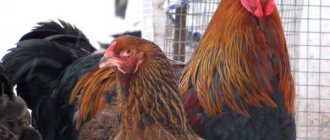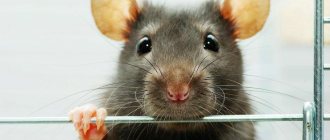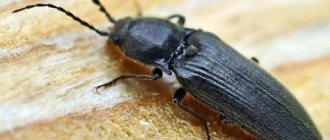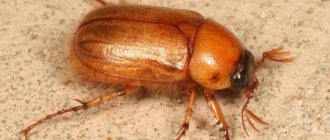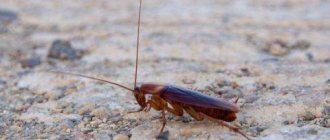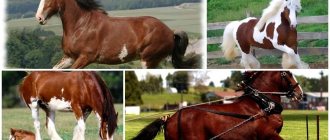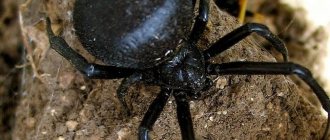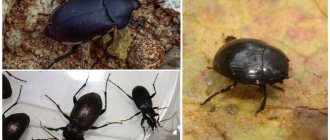Quail as a bird for home breeding in an apartment, in a country house or on farms is becoming increasingly popular. They are raised to produce dietary eggs and tasty meat. There are different breeds of quail that can be kept in cages or aviaries. All these species are wild, found in nature and, being released into the wild, quickly run wild and stop laying eggs every day, but only during the nesting period.
Wild quail in the wild
Some breeds of quail are purposefully bred by humans - such birds are much larger in size than natural species, and their egg production reaches 220-280 eggs per year.
Separation of quails according to purpose
Like other farm birds, quails are divided into several groups:
- meat and egg;
- egg;
- meat breed;
- decorative types.
Regarding the first two directions, it is worth noting that they do not have much difference. The weight of the carcasses and how many eggs a bird lays per day are almost the same. The difference can only be noticed if there are over 10 thousand individuals in their care, that is, only on large industrial farms.
Characteristics of the main breeds - comparison table
But the meat types of quail differ very noticeably - due to their size.
Pharaoh quail weighs 100-150 grams more than wild species or the same Japanese quail. We offer you a description with photos of the most suitable breeds that can be kept in an apartment or on a farm.
Nutrition
Texas quails and Pharaohs are famous for their good appetite, but they are still ahead of Texas quails in terms of the amount of food consumed.
The basis of the diet is grains:
- millet;
- oats;
- barley;
- corn.
In summer, green food is added to grains: clover, alfalfa. Among the preferred root vegetables are beets and carrots.
Quails can immediately eat feed intended for adult birds, only the feed must first be crushed.
Since the hatched chicks are very weak, more nutritious food valuable for microelements is introduced into their diet: grated cottage cheese, eggs (not chicken), chopped greens, bread crumbs.
The diet of laying hens should contain feed containing the following additives:
- salt;
- crushed shells;
- crushed fish waste.
With a population of 100 birds, it is necessary to stock up on feed at the rate of 4-5 kg per day.
Japanese quails
Perhaps it is worth starting with this breed, since it was the Japanese quail that became the ancestors of all other species. Many years ago, this species was distinguished from others, since its egg production is very high. Japanese quails were the first to be used in industrial production.
The incubation instinct of hens was lost, but other, even better qualities appeared - year-round egg production and a calm disposition. This breed is also called “mute”, since the bird does not make any sounds.
The Japanese quail is similar in appearance to the common quail, but larger in size.
Options
- The weight of female carcasses ranges from 130 to 150 g.
- Males will be a little lighter - from 110 to 120 g.
- The approximate weight of eggs is from 10 to 12 g.
- Egg production per year is up to 300 eggs, that is, birds lay them almost every day.
Japanese quails are an ideal option for breeding in an apartment, since they do not require special conditions, are unpretentious and quite economical in feed.
Females can be easily distinguished from males - they have a large brown spot on their chest.
How to distinguish a female from a male?
People with a good ear for music who have already heard male and female “trills” of quails can distinguish them by their voices. In males it is shrill and sharp, in quails it is more melodic and melodious, reminiscent of a quiet purr. Unable to figure out the sounds made by birds? Then there is a more practical way.
Chicks go through puberty at five weeks from birth. At this age, it is already possible to distinguish the sex of individuals by the shape of the genital organs. To do this, take her and turn her tummy towards you. Near the cloaca the feathers are spread apart. In females, this zone has the shape of an elongated slit; in males, the cloaca is rounded, and if you lightly press on the sides, a white-colored liquid appears.
Black English Quail
This breed was bred in England. True, there they call it Tibetan. The body weight of these birds is 6-8% greater than the previous breed, but they are inferior in egg production. The main difference from other species is the color of the plumage: black with a brown tint. Suitable for keeping in an apartment.
English black quail with brown tint
Options
- The weight of the female is up to 180 g.
- The male weighs 160-170 g.
- Egg production is about 280 eggs per year.
Quails of the Estonian breed
Every quail breeder is familiar with this wonderful breed, since it is the Estonian quail that is most widespread in amateur breeding - in the apartment and in the country.
Another name for kiteverse. Buying eggs and young animals will not be difficult, as they are sold almost everywhere. Estonian quails belong to the egg breed; the female begins to lay eggs on the 37th day and carries up to 3 kg of eggs per year, which is an excellent result. How many eggs there will be depends directly on the food.
For a beginning poultry farmer, Estonian quails will be the best option for breeding. After all, they grow quite quickly, and the incubation of eggs is short - 17 days. The height of the cage should be 20, maximum 25 cm - this value was taken because the birds are very active; they can jump when alarmed. Therefore, it is recommended to install fabric mesh rather than metal mesh on the roof of the cage.
The Estonian quail has two white stripes on its head
Options
- The weight of the female is up to 170 g.
- The male weighs 160 g.
- Egg production is about 230 eggs per year.
Temperature
Broiler quails are heat-loving birds, so the optimal temperature for keeping them is about 18 ⁰C. In the cold season, birds begin to squeak and flock together. With this method of natural heating, quails get injured. To prevent bird losses, it is necessary to install heaters.
In cages with chicks up to 4 days old, the temperature should reach 36 ⁰C. In the next 7 days you can lower it to 33 ⁰C. Next, chickens up to 2 weeks of age are kept at temperatures up to 25 ⁰C. After reaching 14 days, the birds are suitable for the general temperature regime.
Texas quail
Poultry of this breed was created by American breeders in order to increase marketable mass and improve the quality of meat. The result was excellent: Texas white quail is 2.5 times larger than other species. These are a kind of “quail broilers”. There is one feature that Texas quail have - how many black feathers there are on the head: the fewer black dots, the more the bird will weigh.
Texas quail are broiler type
Options
- Live weight of a female is up to 480 g, marketable weight is 300 g.
- The male weighs 370 g or 260 g of meat.
- Egg production – 180-200 eggs per year.
Content Features
The Texas quail is not very picky about conditions and feeding, but it is difficult to keep it in an apartment due to the rather specific smell of the droppings. The food should be very high in calories and rich in protein.
- The bird does not tolerate drafts, humidity and sunlight (it stops laying eggs completely) - only dim artificial lighting.
And yet - representatives of this breed of quail are very shy - they are afraid of domestic animals, it is not recommended to handle them, as the bird can get sick from stress. The hatchability of chicks during egg incubation is not very high - a little more than 60%, so it is more profitable to purchase day-old chicks or grown-up young animals.
What you need to know about growing
If you choose the right room for keeping quails and at the same time follow all the subtleties of care, then breeding Texans will not be difficult at all.
Temperature readings
They are the most important factor due to which the bird will gain weight as needed.
After the young are born, the quail must be transplanted into a box or cage where the temperature is maintained at least +38 degrees. The temperature of the space surrounding the cage should not fall below +28. In such conditions, young animals are kept for up to 10 days.
Young animals
Starting next week, temperatures will begin to gradually decrease. In the box it should not be lower than +32, and indoors it should be set at +25.
Then by day 25 the temperature should be +25, and then it is brought to +18.
Today, the farmer does not need to independently calculate the ration; all this has already been done. Feed is selected based on breed and age characteristics
It is important that the manufacturer is good and responsible for the quality of its products. There are a number of subtleties in feeding quails that the owner should know:
from the first week, meat broilers should be given boiled eggs, bone meal, yogurt, and curd products. All this contains protein necessary for birds
All feed must be thoroughly ground; It is important not to forget about green food. With the onset of winter, you can give vegetables, boiled potatoes, beets, carrots; The diet must contain mineral supplements: crushed egg shells, chalk, bone meal, gravel or shell rock; You can increase the growth rate using waste from fish production
Options for installing feeders and drinkers for quail
Texans need drinking stations with fresh water that is changed daily. Otherwise, the liquid will heat up and have a harmful effect on the digestive system.
Lighting requirement
Texas quail should not be exposed to bright lighting. If the room is small, then 60-watt lamps are suitable. Bright light causes aggression in these birds; attacks on each other may begin, which lead to injuries, and the females begin to lay eggs much worse. For newly hatched chicks, lighting is provided around the clock, from the second to the fourth week no more than 20 hours, then reduced to 17.
Manchurian golden quails
Our poultry farmers have recently acquired Manchurian quails, but they have managed to make a good impression. They cannot be classified separately into the egg or meat group, since their egg production is less than that of Japanese quails, but the size of the eggs is one and a half times larger, and Manchurian quails are inferior in weight to pharaohs. This small bird comes from China and is distinguished by its magnificent appearance, for which the Manchurian quail is highly valued. The hen lays eggs every other day.
Manchurian quail looks very elegant
Chinese quails are often kept in apartments as a decorative species.
Options
This breed is divided into two lines according to characteristics: wild and domestic species.
- The live weight of a wild female is only 150-160 g, the market weight is 100 g.
- The male weighs 140 g or 90 g of meat.
- Egg production – 220 eggs per year.
- Egg weight – up to 14 g.
- The live weight of a selection female is up to 300 g, marketable weight is 240 g.
- The male weighs 270 g or 190 g of meat.
- Egg production – 280 eggs per year.
- Egg weight 16-17 g.
Both types, by restaurant standards, are substandard, since they do not correspond to the standard portions, so this sales area should be excluded. But carcasses are in high demand on the market.
Conditions for keeping broilers
The young animals are planted in a brooder under a lamp, fed with calcium gluconate, and the first feeding begins. The chicks are given a boiled egg. From the 3rd feeding, the egg can be mixed with herbs from the garden and millet. From the 3rd day, combined feeds from the manufacturer or home-made are introduced.
The chicks are growing quickly. They require a lot of space. After 2 weeks, it is recommended to plant the young animals. When breeding quails with meat productivity, a lower stocking density is taken into account than for egg-laying poultry.
In a standard cage of 100*50 cm there are no more than 20 individuals. The standard ceiling height is 20-30 cm, but for “pharaohs” and for Texas white the upper mesh is raised to 40 cm.
| № | Helpful information |
| 1 | the temperature under the brooder is maintained at 36 C, but within 3 weeks it is gradually reduced to 20-24 C |
| 2 | indoor humidity 70%. In the summer, it is recommended to use air humidifiers in the poultry house. |
| 3 | An infrared lamp is installed in the brooder for chicks. It serves as a source of light and heating. The lamp is not turned off. Starting from 8 days, daylight hours are gradually reduced, bringing it to 16 hours |
| 4 | fluorescent lamps are used as lighting. Bright lighting causes aggression in birds |
For feeding, it is recommended to use grain mixtures: corn, sprouted wheat, barley. All ingredients are crushed. Finely ground cereal is prepared for the chicks. Cake takes up a large share in the diet.
It is recommended to add minced fish and boiled beef liver to the dry mixture. Be sure to supplement the diet with mineral and vitamin supplements. When feeding, it is recommended to adhere to the following diet:
- grain mixture – 40%;
- cake – 20%;
- minced meat – 11%;
- yeast – 3%;
- chalk – 3%;
- bran – 14%;
- herbal flour – 9%.
Always keep an eye on the filling of drinking bowls. When consuming dry mixtures, quails should drink a lot of water. If the drinkers are of a groove type, then the water is changed every time food is served. It is recommended to use nipple designs.
If quails are kept in an enclosure, then it is necessary to install boxes with sand and ash for them. Birds take baths to cleanse their bodies of dirt and insects.
Breeding broiler quail requires some knowledge. "Pharaohs" are unpretentious. They easily tolerate changes in diet and maintenance, but the same cannot be said about the Texas white. An optimal diet is selected for her, and a comfortable microclimate in the poultry house is maintained.
Quails of the Pharaoh breed
This bird belongs to the meat group. Unlike other breeds, Pharaoh quails mature much earlier; the hen lays eggs from the 50th day of life; poultry can be slaughtered for meat on the 40th day. In appearance, the Pharaoh quail breed is almost the same as the wild species, but twice as large. The breed was bred in the USA by amateur breeder A. Marsh specifically for breeding for meat. How much a carcass weighs directly depends on the quality of the feed.
Options
- The live weight of the female is up to 320-350 g, marketable weight is 240-270 g.
- The male weighs 250-280 g or 180-200 g of meat.
- Egg production – up to 200 eggs per year.
- Egg weight – 15 g.
Quail Pharaohs require special conditions
Although the characteristics of this breed are very attractive, many experts consider it unsuccessful - due to the unpresentable appearance of the bird itself, the carcass also does not look very neat. And also, the pharaohs require very precise compliance with the conditions of detention: a constant temperature of +20 degrees and air humidity from 60 to 70%. If these indicators are violated, egg production drops sharply, and the bird begins to get sick.
Pharaoh quails are also very shy and become aggressive due to constant stress.
But if the chicks are provided with the right conditions and complete high-calorie food, then 30-35% of their number can grow to a weight of 500 grams. One head should be provided with 50-70 g of protein feed daily, which is significantly more than other species consume.
Development of young animals
The weight of a hatched tuxedo quail is 7-8 g. After the chicks hatch, they are kept in the incubator for several more hours to dry, after which they are transferred to a brooder - a kind of nursery for newborns, where it should be very warm. Here they will spend the first weeks of life. The poultry must be sorted. Weak chicks and those with obvious developmental anomalies are very difficult to hatch. In most cases, they die in the first days of life. It is impractical to keep such animals, so many experienced quail breeders get rid of them without hesitation.
Those who are caring for young tuxedo quail for the first time should remember that the chicks are small and nimble. They can easily crawl under fabric bedding and die there. If they are cold, they huddle together and squeak; if it is too hot, they lie with their necks stretched out. You may not be able to keep track of the quails. They easily overheat and freeze. The best option is to use an infrared lamp, which can be hung above the brooder box and its height can be adjusted to make the chicks comfortable. The air temperature in the first ten days in the brooder can reach 35-38C. Then it should gradually begin to be reduced, and by the age of one month the birds can already be kept at room temperature - 22C.
Nutritional Features
Feeding young tuxedo quail is not difficult. The easiest way is to use special factory compound feed for quails, which should be additionally ground into almost flour during the first days. They simply will not be able to peck at larger granules. In its absence, it is best to opt for compound feed for turkey poults, since it is considered to be more nutritious than usual for chickens or broilers. You can simply pour the food onto the bedding or into feeders with very low sides.
Additionally, Tuxedo Quail chicks should always have clean water poured into a very shallow water bowl to prevent them from drowning. Some people use plastic lids for jars. You can take a regular drinking bowl for chickens, but put several small stones in the groove so that the quails can only drink and not completely climb into the drinking bowl.
For the first two weeks, the chicks need round-the-clock, but not too bright, lighting, then the daylight hours begin to gradually decrease, bringing it to 17 hours by the age of one month.
If we take into account all the nuances of caring for tuxedo quails, the safety of young animals can reach 98-99%. This is a very high figure compared to other types of poultry.
English white and brown quails
They differ only in the color of their plumage, although these breeds of quail are different. Representatives of the breed were recently brought to our country from Hungary by amateur poultry farmers. Egg laying begins on the 40th day. This bird is calm and undemanding, so it actively spreads throughout private households. There are two opinions on how many eggs the breed produces, some say no more than 240, others 280.
English white quail is quite unpretentious
Options
- The live weight of the female is up to 170 g, marketable weight is 110-120 g.
- The male weighs up to 150 g or 90 g of meat.
- Egg production – up to 280 eggs per year.
- Egg weight – 10-11 g.
Feeding
To feed chicks in the first days of life, they use a boiled egg, crushed with its shell, and cottage cheese rubbed through a sieve. Gradually introduce greens; starting from the third day, they give starter feed. Chicks are transferred to adult feeding at the age of 30 days.
Considering that the breed is a broiler, standard feed (chicken, quail) may not be enough to fully reveal its qualities. For rapid growth, quails need a high protein content . It is better to use mixtures for turkey poults or additionally enrich standard feed with proteins. For this purpose, milk powder, meat and bone meal and feed yeast are used.
An example of the diet of an adult bird for the fattening period (consumption per individual 40-50 g per day):
- Compound feed PK-5.
- Waste dairy products (whey, yogurt, cottage cheese) – 20%.
- Corn grits – 10%.
- Millet – 10%.
- Mineral mixture.
In the laying hen menu, chopped sea fish and salt are added to the main ingredients.
What to feed quails. Recipes for homemade mixtures and factory-made feed
Read
Drinking bowls for quails. Master class on making a vacuum drinking system for chicks and a nipple system for adult birds
More details
Eating quail eggs. Benefits for the human body, possible harm
Article
Tuxedo breed
This is a beautiful small bird with a white “front” on its chest and dark brown plumage, which is how it got its name. They are also called tuxedo. The species was developed in Great Britain by crossing white and black birds. The hens begin to lay eggs on the 42nd day and belong to the egg direction. An excellent choice for keeping in an apartment.
Tuxedo quail - a universal breed
Options
- The live weight of the female is up to 180 g, marketable weight is 120 g.
- The male weighs up to 160 g or 100 g of meat.
- Egg production – 260-280 eggs per year.
- Egg weight – 11 g.
Appearance
A representative of this breed has white plumage; small dark gray spots on the head are allowed. At the same time, under the white plumage the skin has a pinkish color, and in places of spots it is gray. Therefore, when selecting young birds, chicks with a minimum number of spots are selected in order to improve the appearance of the carcass.
The bird's plumage is lush. The back and convex chest are well developed. A small head and short neck are discordant with a large, dense build. The eyes are round and black, the beak is beige, sometimes with a dark tip. The light pink legs are muscular.
Quails NPO "Complex"
At the production and experimental factory of NPO Kompleks, a separate population was bred, which is already classified as a breed (without a name yet). It was obtained from crossing meat pharaohs and marbled quails. This is a universal type of meat and egg production - they produce up to 260 eggs per year, and the live weight is up to 200 g for the female and 170 g for the male. In appearance they are similar to the Japanese breed.
Quail NPO Complex is an established separate breed
How many eggs a hen will produce depends on the lighting and the number of birds per 1 sq.m. When crowded, productivity drops.
Cage equipment
Among quails, broiler breeds are especially large, so they need larger cages compared to the Japanese or Estonian breeds. The area is calculated subject to the ratio: 30-50 cm2 per bird. The optimal cell height is 40 cm.
Quails and laying hens are kept separately.
Quails love to stick their heads through the bars, and to prevent birds from getting stuck, you should choose cages with cells of at least 35x45 mm. Drinkers and feeders are installed outside the cages.
Since broilers lay directly on the floor, the cages are equipped with egg collectors.
Cleaning housing for quails can be semi-automated by placing trays in the cages. The droppings will fall out through the cells. The farmer does not have to clean each cage separately; it is enough to remove the droppings from the tray.
Broiler virgin
Quite a large broiler type bird - live weight up to 300 g, egg production is low - only 60 eggs per season. In our country, this species is not widespread; this beautiful bird (especially cute cockerels) is more often bred as an ornamental breed. Kept in zoos. In the USA, chicks are raised on farms and released into the wild, where hunting for this bird is very popular.
Virgin quails are still rare among us
Advantages
The following characteristics speak in favor of choosing Texas quail as a broiler breed:
- rapid large increase;
- intensive weight gain in chicks;
- delicious dietary meat;
- rare cases of problems with the oviduct (prolapse and other damage);
- unpretentiousness to living conditions;
- minimal care costs;
- presentation of meat after processing;
- the skin is easily cleaned from the feather.
Texas quail carcasses
American albinos
They are also called American Whites - this is a broiler line, the female weighs about 500 g, and if desired, they can be raised up to 700 g. Often these crosses are confused with the Texas breed, and sellers deceive buyers by slipping eggs and young Texans, which are several times cheaper .
These quails are very resistant to diseases; they do not require vaccination when kept on a farm or in an apartment.
Albino quail is a separate breed from the USA
Options
- The live weight of the female is up to 520 g.
- How much does a male weigh? Up to 450 g.
- Egg production – 60-75 eggs per year.
- Egg weight – 15 g.
Breeding Features
Meat quails have almost lost their brooding instinct, so to increase the number of quails you will need an incubator. The best eggs for breeding are those obtained from laying hens aged 2-9 months. In the future, their fertility is lower.
The viability of the embryo in the egg lasts just over 10 days, but it is advisable to place the eggs in an incubator before seven days, then the hatchability will be at least 90%. If the eggs sit for 7-10 days, 70% of the eggs will hatch into chicks. The egg storage temperature is 18-22 ⁰C.
In general, the period from laying in the incubator to the appearance of the chicks is 17 days. Chicks are born small and weak and require careful care. Survival rates range from 60-70%.
The description of the Texas broiler quail and the Pharaoh breed indicates the feasibility of breeding poultry on an industrial scale and in the home. When favorable growing conditions are created, broilers quickly pay for themselves due to rapid weight gain and are provided with sufficient quantities of egg products.
Decorative breeds
We have few breeds for decorative breeding in the apartment. It is difficult to find a description of them, but we provide photos in the photo gallery.
Chinese painted
Chinese painted quail - the smallest
Brown Crested
Brown-crested quail are native to South America.
California Cresteds
California quails are very impressive
Australian yellows
Australian yellows are a rare decorative species in our country.
Indian
Indian quail has bright plumage
Harlequin
The Harlequin Quail is a natural species from Asia.
Black-breasted
Black-breasted quail is listed in the Red Book
Crowned
Crowned quail - the most beautiful of all breeds
Scaly
Scaly quails are beautiful and unpretentious
California Quail
An ornamental species distributed throughout the United States, it is also called the California partridge. It is distinguished by its appearance: body size 25 cm, with a small tail, short beak, and a crest on the head. The color is multi-colored: brown, green, blue, gray, with a characteristic pattern.
These shy birds crowd in groups, emitting peculiar cries. The diet of this species should primarily consist of plants: seeds, flowers, leaves and birdseed. Birds also eat mites, beetles and caterpillars. This species, in arid environments, can obtain sufficient moisture from insects and succulent plants. Not suitable for meat production, bred only for decorative purposes.
The main breeds of quail that can be found in our countries:
- Texas;
- English white;
- Japanese;
- Estonian;
- Pharaoh;
- tuxedo;
- Californian;
- Tibetan.

